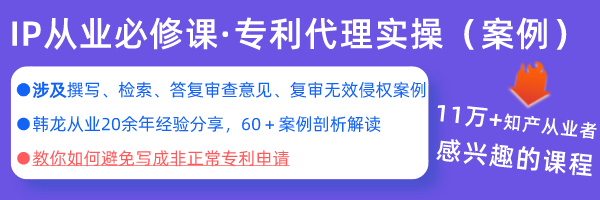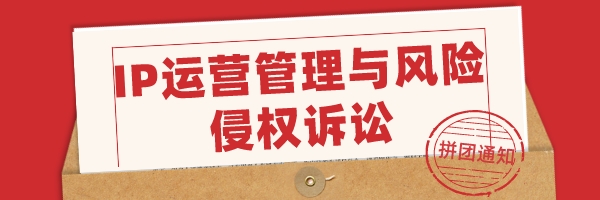Troutman Sanders Federal Circuit Review: Lawsuit Seeking Declaratory Judgment to Shield Drug from Patent Is Premature When Brought Prior to Filing for FDA Ap..
发布时间:2014.12.12 北京市查看:2443 评论:0
Each week, we succinctly summarize precedential patent opinions issued by the United States Court of Appeals for the Federal Circuit in the preceding week. We provide the pertinent facts, issues, and holdings. Our Review allows you to keep abreast of the Federal Circuit’s activities – important for everyone concerned with intellectual property. We welcome any feedback you may provide.
– Troutman Sanders LLP
Sandoz, Inc. v. Amgen Inc. and Hoffmann-La Roche Inc., No. 2014-1693, 2014 U.S. App. LEXIS 22903 (Fed. Cir. Dec. 5, 2014) (Taranto, CJ.). Click Here for a copy of the opinion.
Sandoz, the generics arm of Novartis AG, sued Amgen and Hoffmann-La Roche to obtain a declaratory judgment that two patents, owned by Hoffmann-La Roche and exclusively licensed to Amgen, are invalid and unenforceable and will not be infringed if Sandoz manufactures, uses, offers to sell, sells, or imports a drug product “biosimilar” to Amgen’s Embrel®. At the time it brought suit, Sandoz had not yet filed an application for FDA approval of its contemplated drug, which was being tested for its FDA filing. The district court dismissed the case, finding that it lacked subject matter jurisdiction because no immediate, real controversy existed between the parties, and because the suit was barred by the Biologics Price Competition and Innovation Act of 2009 (BPCIA), Pub. L. No. 111-148, §§ 7001-7003, 124 Stat. 119, 804-21 (2010) (codified principally at 42 U.S.C. § 262).
The Federal Circuit affirmed, determining that there was insufficient immediacy and reality to warrant issuance of a declaratory judgment. The Court found that Sandoz’s only activity that would create exposure to potential infringement liability was a future activity requiring FDA approval, which had not been sought. Such future activity was years away from the June 2013 lawsuit. Sandoz had only started Phase III trials, expected to run through April 2015 and required before filing for FDA approval. Further, Sandoz could decide to not file for FDA approval or could materially change the drug composition based on the Phase III trial results. The Court was not persuaded that an immediate, real controversy existed because Amgen stated that its patents cover Embrel® and that Amgen intends to invoke its patents against competing products. These threats did not outweigh the potential for Sandoz to delay, withdraw or alter its product.
The Federal Circuit declined to address the district court’s BPCIA rationale or whether, once an application is filed under the BPCIA, that statute forecloses a declaratory judgment action for non-infringement under 35 U.S.C. § 271(a).
The following opinions are not reported in this newsletter:
Tyco Healthcare Group LP v. Ethicon Endo-Surgery, Inc., No. 2013-1324, -1381, 2014 U.S. App. LEXIS 22777 (Fed. Cir. Dec. 4, 2014) (Asserted claims were invalid under §103, because §102(g) prior art may serve as prior art under §103 even without a showing of prior reduction to practice). Click Here for a copy of the opinion.
Ericsson, Inc. v. D-Link Sys., No. 2013-1625, -1631, -1632, -1633, 2014 U.S. App. LEXIS 22778 (Fed. Cir. Dec. 4, 2014) (Substantial evidence supported the jury’s finding of infringement where the jury could properly base its infringement finding on the reasonable capability of the unmodified accused devices, and substantial evidence supported induced infringement where the defendants knew that the patents potentially were essential to the 802.11(n) standard). Click Here for a copy of the opinion.
Memorylink Corp. v. Motorola Solns., Inc., No. 2014-1186, 2014 U.S. App. LEXIS 22901 (Fed. Cir. Dec. 5, 2014). (Assignment was valid since consideration was actually exchanged, even if two out of four assignors were later deemed erroneously included as co-inventors). Click Here for a copy of the opinion.
DDR Holdings, LLC v. Hotels.com, L.P., No. 2013-1505, 2014 U.S. App. LEXIS 22902 (Fed. Cir. Dec. 5, 2014) (Claims were patent-eligible under §101 because the solution amounted to an inventive concept for resolving a particular internet-centric problem). Click Here for a copy of the opinion.

评论列表
- 暂无评论数据
快速回复
小白菜大白菜
[5]思博市市长
主题:299 回帖:325 积分:373
TA最近发帖
- Will Congress be misled on patent reform again?
- New Zealand seizes 43,000 fake goods in 2014
- U.S. consumer electronics industry revenues projected to reach all-time high in 2015
- Top European Copyright Experts Urge Reform, Unification Of Copyright
- Web firms' video and subtitle sites closed in IPR crackdown
热帖推荐







分享
收藏
点赞
举报